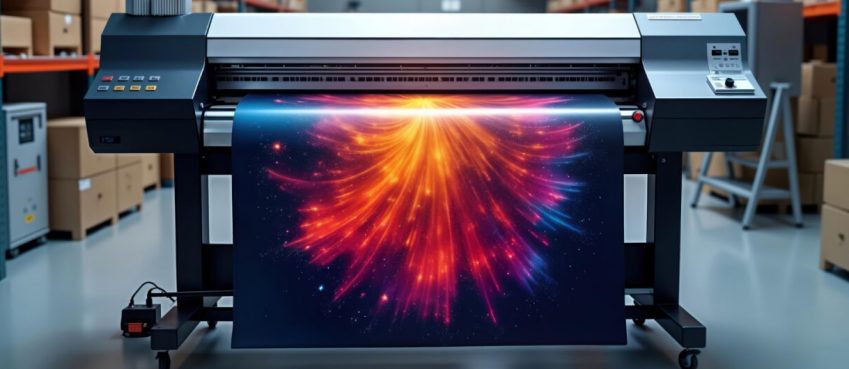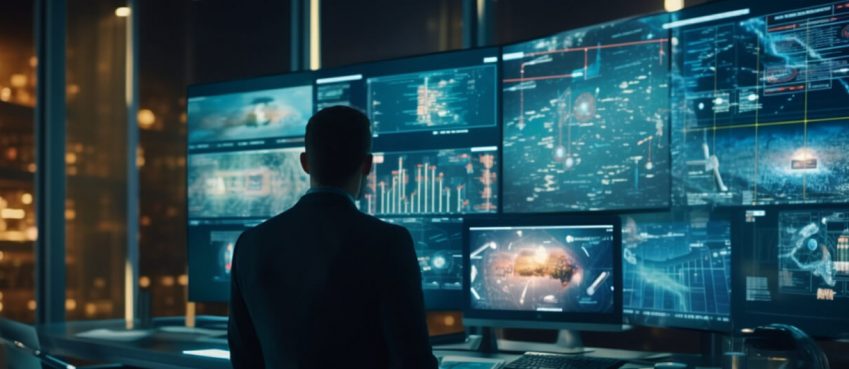
Digital Single Lens Mirrorless or DSLM cameras which are also known as mirrorless cameras being the heart of photographers.
These incorporate a new-age of technology that makes it a different shooting device from DSLR cameras and compact cameras.
Though shooting with a mirrorless camera is easy and simple but it’s difficult to learn as it has various learning curves.
To be honest, whether competing between DSLR and mirrorless cameras, both have its advantages and disadvantages.
So, if you want to master any type of camera and that’s not being specific here, there are certain things to learn.
In this blog, I have mentioned seven best methods to master your mirrorless camera or any type of camera for photography.
7 Steps To Master Your Mirrorless Camera
Mirrorless cameras incubate different technology which means they don’t use mirrors to produce an image (like you have seen in DSLR).
Also, it compasses electronic viewfinder instead of optical viewfinder, which surprisingly has its own benefits.
Let’s learn how to use a mirrorless camera for a good video and photo quality.
1. Explore settings and modes
It starts with learning your own camera’s settings and modes.
In simple terms, first learn about your camera that counts features, several modes for shooting, settings related to photo, video, export, style, and more.
Basically, mirrorless cameras offer tons of modes for shooting and exceptional settings for creative shooting or cinematic shooting.
The important settings you should consider modifying include flash mode, shooting format style, autofocus recognition style, export quality, and color bit depths such as 16-bit depth images.
Besides, know your best settings before you shoot any object. So, the more you learn about your camera’s ability, the more perfect you can shoot.
2. Marvel the ISO sensitivity
When you are done exploring settings and modes of your mirrorless camera. Try it for casual shooting in auto mode.
See the images and its details. You would probably notice something called ISO.
So, your next important step is to get to know everything about ISO.
Simply put, it stands for international organization for standardization (ISO) expressed in numerical value related to light sensitivity.
The lower the value, the lighter the light sensitivity would be. For e.g., 500 ISO value would have fewer light sensitivity than 1200 ISO value, expressing high light sensitivity.
3. Know the right shutter speed
Shutter speed plays an important role in both image and video. So, the next step is finding the right shutter speed for your shooting.
Ironically, right shutter speed for shooting depends on the subject and the lens focal length. Simply put, if you are shooting a slow-moving object, your camera shutter speed is lower compared to a fast-moving object.
Here is an example; capturing sharp shots of slow-moving subjects is 1/250s. For fast action, such as birds in flight or cars driving, you’ll need to shoot at 1/1000s or above.
Here are some other shutter speeds to consider:
- 1/500 – Good for general photography of everyday events, sports, and subjects.
- 1/125 – Good for taking a photograph of a moving vehicle.
- 1/60 – The standard shutter speed on a camera.
Additionally, you can also opt for the rule of thumb for figuring out the right shutter speed. For example, if you are shooting with a 200mm lens, you want to keep your shutter speed at 1/200 sec or above to avoid any blur from camera shake.
4. Learn about the aperture
Aperture is another critical factor to marvel in order to master your mirrorless camera. Proceed to it only when you master the above two factors.
Basically, aperture is the opening in a camera lens that controls how much light reaches the sensor. There are various aperture settings available to select when shooting for stills or video.
These range from the widest (f/1.4) to the smallest range (f/32). The higher the f-number, the smaller the aperture opening. The smaller the f-stop, the larger the aperture.
5. Consider mechanical or electronic shutter
Mirrorless cameras come with two modes of shutter priority options i.e. mechanical and electronic.
The former uses a mechanical device to work the shutter in progress. Generally, these are not silent but freeze fast-moving objects. The latter, on the other hand, is quicker to operate and is silent. It directly tells the sensor to capture images without shakiness and blurriness.
Remember, in mechanical shutter, a little shake can cause shakiness and blurriness. While it does not happen in electronic shutter.
6. Find the right lens
When you are done with learning exposure triangles (shutter speed, aperture, and light sensitivity) you are then good for choosing your lens for photography.
Lenses play an important role in assisting better image quality and prospective for quality shooting. You can find wide ranges such as 4mm to 200mm and even higher.
Here’s a brief description of focal length size guide:
| Focal Length | Types of Lens | Used For |
|---|---|---|
| 4mm – 14mm | Fisheye | Abstract, creative |
| 14mm – 35mm | Wide angle | Landscape, architecture |
| 35mm – 85mm | Standard | Street, travel, portrait |
| 85mm – 135mm | Short telephoto | Street photography and portraits |
| 135mm+ | Medium telephoto | Sports, wildlife, action |
| 300mm+ | Super telephoto | Sports from a distance, nature and astronomy |
| 35mm – 200mm | Macro | Close-up shots |
7. Do lots of shooting
When you marvel at each of the steps, do as much shooting as you can. And I recommend shooting you in manual mode because it lets you gain more experience.
In addition to this, you get to know every setting clearly in your mind and in detail when attention is provided.
Note: The exposure triangle is a term used in photography to describe how three camera settings, aperture, shutter speed, and ISO, impact the exposure of an image. You must conquer it all in order to marvel at shooting with a mirrorless camera.
Best Mirrorless Cameras
Need suggestions for some year’s best mirrorless cameras? Here are some of the top-ranked mirrorless cameras.
1. Sony A7 IV

Sensor: Exmor R back-illuminated CMOS sensor
Sensor size: Full-frame
Megapixels: 33 MP
Lens mount: Sony E
LCD screen: Vari-angle touchscreen, 1.03m dots
Max continuous shooting speed: 6fps
Max video resolution: 4K 60p
An all-rounder mirrorless camera that pushes beyond the basics, Sony A7 IV does double duty with a 35-mm full-frame sensor and a superior BIONZ XR engine.
Read full review on Sony A7 IV
2. Fujifilm GFX100

Sensor: Large format CMOS sensor
Sensor size: Larger than full-frame
Megapixels: 102 MP
Lens mount: FUJIFILM G mount
LCD screen: Tilt-type, 2.36m dots
Max continuous shooting speed: 5fps
Max video resolution: 8K 24p
Previously, Fujifilm launched medium-format cameras back in 2017, but those aren’t so great. But, with the launch of the 102 MP camera, the GFX100, however, is a good mirrorless camera as compared to older versions.
Read full review on Fujifilm gfx100
3. Fujifilm X-H2S

Sensor: X-Trans 5 stacked back-illuminated APS-C
Sensor size: APS C (23.5 mm x 15.6 mm)
Megapixels: 26.16 MP
Lens mount: FUJIFILM X mount
LCD screen: Full articulating, 1.62m dots
Max continuous shooting speed: 40fps
Max video resolution: 6.2K 30p
Fujifilm X-H2S is one of the best APS-C mirrorless cameras on the market. The camera is advanced and equipped with a range of rugged specifications.
Read full review on Fujifilm xh2s
4. Panasonic LUMIX S5

Sensor: Dual Native ISO technology CMOS
Sensor size: Full frame
Megapixels: 24.2 MP
Lens mount: L mount
LCD screen: Free angle, 1.84m dots
Max continuous shooting speed: 7fps
Max video resolution: 4K 30p/60p
Priced economically, it delivers high-end results similar to Sony Alpha and FujiFilm’s high-end professional series. This means you need not have to look further for any pro cameras.
Read full review on Lumix S5
5. Canon M50 Mark II

Sensor: APS-C CMOS sensor
Sensor size: APS-C (22.3 x 14.9 mm)
Megapixels: 24.1 MP
Lens mount: Canon EF-M
LCD screen: Vari-angle touchscreen, 1.04m dots
Max continuous shooting speed: 10fps
Max video resolution: 4K at 24fps
The Canon m50 is a pretty genuine still-shooting camera that can do the vast majority of your photography. Regardless of photography, it is also good at video shooting.
Read full review on Canon m50 mark II
What’s Next
Mirrorless cameras are fun to shoot and easy to learn. Consider these seven steps to marvel photography using mirrorless cameras.
That’s all in this blog. Hope you liked it 🙂
Top 10 News
-
01
Top 10 Deep Learning Multimodal Models & Their Uses
Tuesday August 12, 2025
-
02
10 Google AI Mode Facts That Every SEOs Should Know (And Wha...
Friday July 4, 2025
-
03
Top 10 visionOS 26 Features & Announcement (With Video)
Thursday June 12, 2025
-
04
Top 10 Veo 3 AI Video Generators in 2025 (Compared & Te...
Tuesday June 10, 2025
-
05
Top 10 AI GPUs That Can Increase Work Productivity By 30% (W...
Wednesday May 28, 2025
-
06
[10 BEST] AI Influencer Generator Apps Trending Right Now
Monday March 17, 2025
-
07
The 10 Best Companies Providing Electric Fencing For Busines...
Tuesday March 11, 2025
-
08
Top 10 Social Security Fairness Act Benefits In 2025
Wednesday March 5, 2025
-
09
Top 10 AI Infrastructure Companies In The World
Tuesday February 11, 2025
-
10
What Are Top 10 Blood Thinners To Minimize Heart Disease?
Wednesday January 22, 2025







